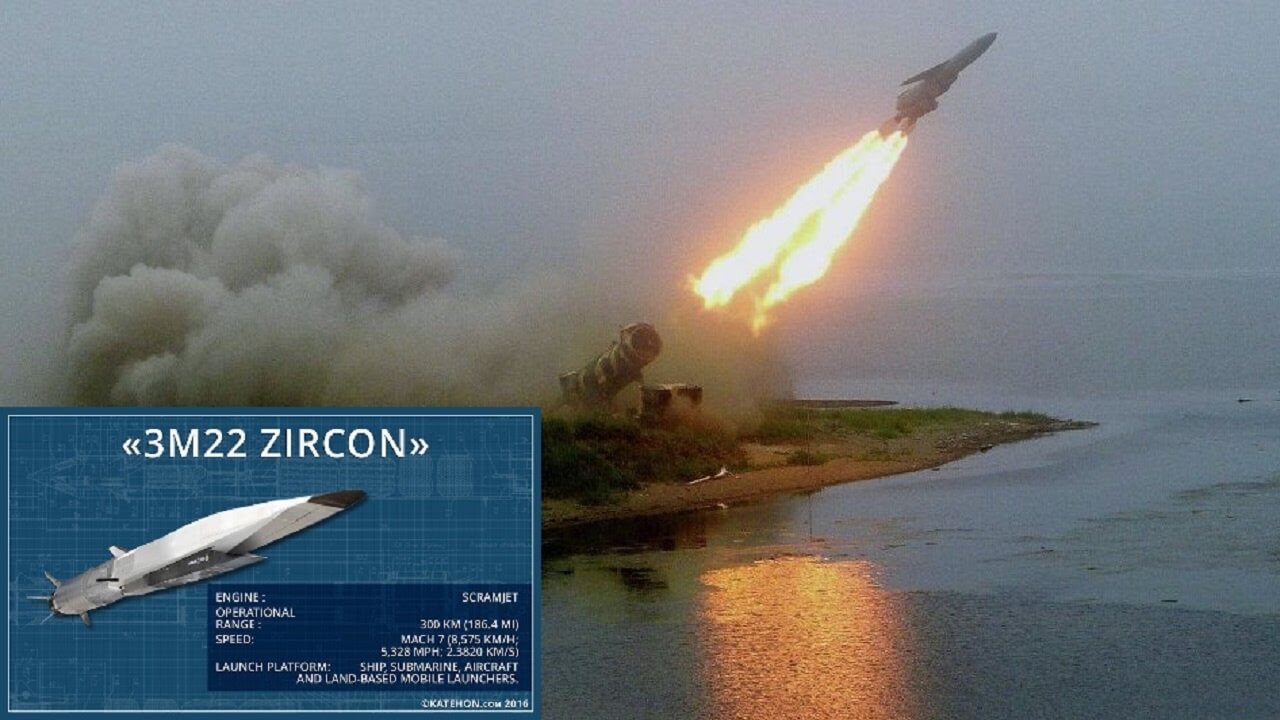Photographs of Russian missile wreckage that was found in Ukraine bearing the marking “ZM22” have given rise to speculations that it could likely be the latest “Zircon” (or Tsirkon) hypersonic missile.
In an attempt to hit a target in Kyiv, Russian forces launched a 3M22 Zircon missile on February 7, 2024, according to a report published in Ukrainian media. The claims made by the publication were supported by images of the missile’s wreckage.
EurAsian Times could not independently verify the claims.
The report noted that one of the images specifically depicts a piece of debris bearing the “3M22” designation, which, along with the Kh-47 Kinzhal, is associated with the so-called “Putin’s wunderwaffe,” or the Russian military’s most popular “hypersonic” long-range strike weapons.
At least five people were killed, and numerous others were injured in Russian missile and drone strikes that targeted cities throughout Ukraine early on February 7.
However, the official report from the Ukrainian Air Force only lists the interceptions of Shahed drones and Kh-555/101 and Kalibr cruise missiles. The service did not say anything about the use of Zircon hypersonic missiles, unlike the first reported use of another Russian hypersonic missile, Kinzhal, last year.
If the use of Zircon is confirmed, it will be the first combat use of Russia’s newest hypersonic missile. The publication also based its assumptions on a warning issued by the Ukrainian administration at the time of the missile attack.
The residents of Kyiv were reportedly alerted to the arrival of a high-velocity missile by a brief notification sent by the Air Force at 07:46 a.m. local time.
Russia might have used its new 3M22 Zircon hypersonic missile for the first time against Ukraine this morning — Defense Express.
Photos of the wreckage labeled "ZM22" have been published.
They were found allegedly in Dniprovsky district of Kyiv near the affected power line.… pic.twitter.com/R9v8LtVHN1
— Anton Gerashchenko (@Gerashchenko_en) February 7, 2024
Some Ukrainian channels went on to assert that this may not be the first time that the Zircon has been used against Ukraine. The wreckage found on February 7 bore a strong resemblance to another downed missile, which was discovered a month ago.
The same presumption was made about those debris pieces belonging to a 3M22 Zircon when they were discovered. However, since Russia has managed to keep the details of its latest, cutting-edge hypersonic missile classified, there has been little to no confirmation that it was Zircon.

When asked whether the missile could have been used by Russia, an avid watcher of the Russian military, analyst, and Indian Air Force Squadron Leader Vijainder K. Thakur (retd.) told EurAsian Times, “TASS recently reported that the missile has yet to be operationally inducted. It is still undergoing trials.”
Several other Russian military watchers also doubt the possible use, but no expert could say anything with utmost certainty. As such, most of the news coming out of the warzone is difficult to confirm as both sides, Russia and Ukraine, are making lofty claims.
In fact, if Ukrainian claims are anything to go by, several Kinzhal missiles have been downed by its Patriot missile defense system. However, Russia continues to deny these claims and maintains that the missile could not be intercepted and remains invincible to this day.
What Is The Zircon Hypersonic Missile?
Zircon is a hypersonic cruise missile that uses scramjet propulsion. Zircon cruise missiles use cooled supersonic combustion ramjet engines, which power combustion by compressing air flowing at supersonic speeds due to the missile’s forward motion.
This is in contrast to other hypersonic weapons like the China-made DF-17 or the Russian-made Avangard, which use a Hypersonic Glide Vehicle (HGV).
Hypersonic cruise missiles, like the Zircon, are powered by cooled supersonic combustion ramjet engines, which compress air moving at supersonic speeds due to the missile’s forward motion. This is in contrast to other hypersonic weapons, such as the DF-17 from China or the Avangard from Russia, which use a Hypersonic Glide Vehicle (HGV).
Zircon is expected to be compatible with the 3S-14 vertical launch system, which is currently being fitted on the Kirkpatrick and Grigorevich classes, as well as the Kirov-class cruiser Admiral Nakhimov, which is currently undergoing refurbishment. In addition to these frigates, the Zircon is also supposed to be equipped with Russia’s quietest submarine, the Yasen-class.
Experts believe that Russian vessels equipped with Zircon hypersonic missiles would challenge the US Navy’s supremacy by endangering its aircraft carriers.
In terms of strategy, the Zircon is predicted to pose a threat to valuable Western sea platforms and land targets. Since kinetic energy is the single best indicator of lethality against large surface targets (more so than warhead size), the Zircon’s incredible speed would seem to make it an excellent vector of attack against larger vessels.
The kinetic energy of a hypersonic missile on impact will allow Russia to attack hardened, deep, and ground targets.
The CEO of Tactical Missiles Corporation, Boris Obnosov, said in an interview with Rossiya-24 television that the missile can defeat nearly any air defense system.
“For the time being, the characteristics of the Tsirkon system are extremely high, and, of course, a very effective anti-missile or air defense system is needed to intercept it. To me, at present, Tsirkon is a weapon that allows us to say that we can overcome any enemy defense.”
However, military experts have also advised to take Russian assertions with a pinch of salt. For instance, a RUSI report delved into the difficulties the missile would face against mobile targets and expressed skepticism about the rocket being fielded by the Russian Navy.
The missile was officially adopted by the Russian Navy on January 4, 2023, coinciding with the induction of the Admiral Gorshkov frigate, and is still reportedly undergoing trials on various levels.
- Contact the author at sakshi.tiwari9555 (at) gmail.com
- Follow EurAsian Times on Google News